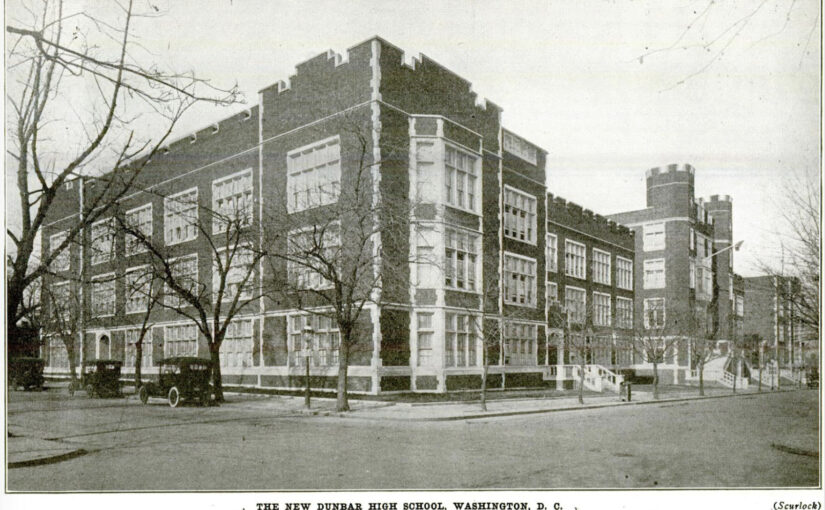This year for Black History Month we’ll review chapter by chapter Alison Stewart’s First Class: The Legacy of Dunbar, America’s First Black Public High School. This is more Truxton Circle related then this blog’s previous annual looks at Shaw resident and founder of Negro History Week (later Black history month) Dr. Carter G. Woodson’s Mis-Education of the Negro. As Dunbar High School is located in Truxton Circle currently taking up all of Square 554.
This chapter focuses on the Class of 1946 and their stories. From these individuals’ stories we can see how much Dunbar meant to them and what a unique institution it was. We can gather this group was still alive to extract this history from when the author was gathering material.
The story of Vashti Atkins, who was the Editor in Chief of the Dunbar yearbook, was less than romantic. In her sophomore year she got TB and at that time had to go to a special hospital where she stayed for a little over 3 years. But while in the hospital she was roomed with another Dunbar student, Vivian Stark and they formed a life long friendship. When she returned to Dunbar, she was a legal adult.
The next story was that of Joe Stewart was was from New York City. Dunbar must have been something special as it seemed to attract students beyond the District of Columbia’s borders. His parents were concerned about his academic future. His father graduated from M Street, so his parents decided to send him to live with grandparents in DC to attend Dunbar. Stewart recalled an instance when he and a fellow student Leon Ransom were collecting signatures to protest Safeway’s lack of Black cashiers and the police were called. Leon “Andy” Ransom was the son of NAACP lawyer Leon A. Ransom, and upon recognition of the name the police left the boys alone. The chapter also tells Carol Graham’s story and we learn later that Carol and Joe Stewart married and their lives after Dunbar.

